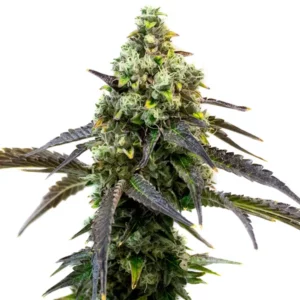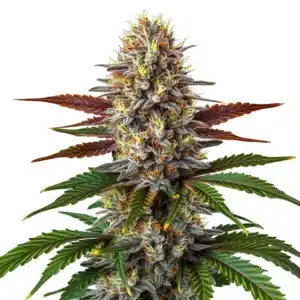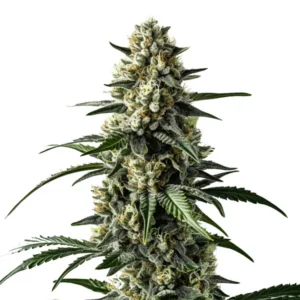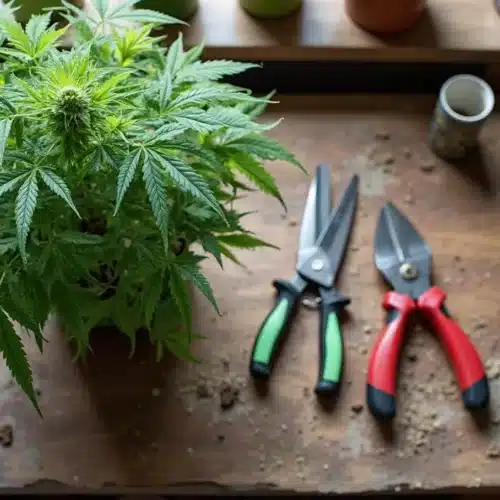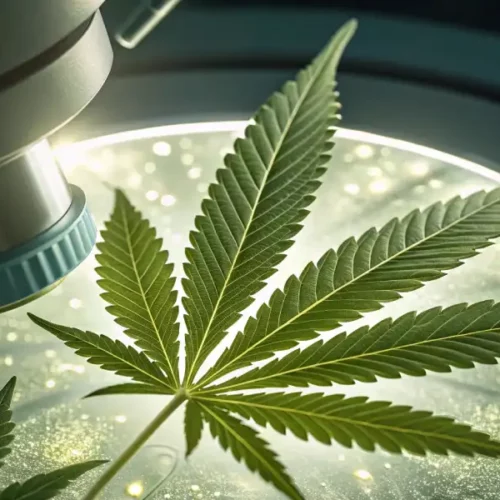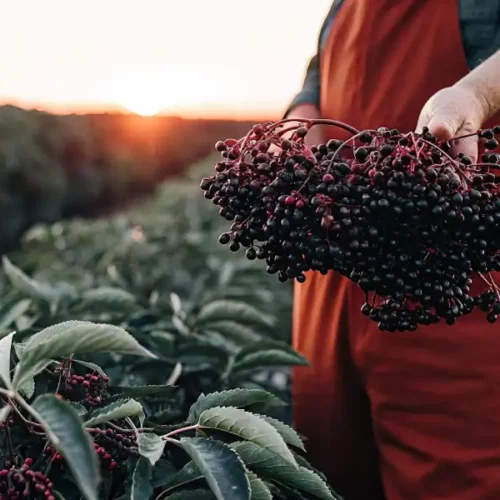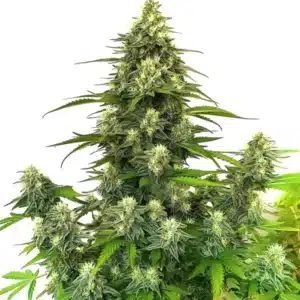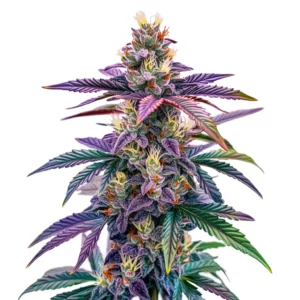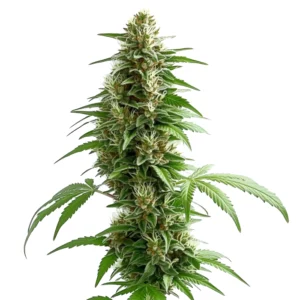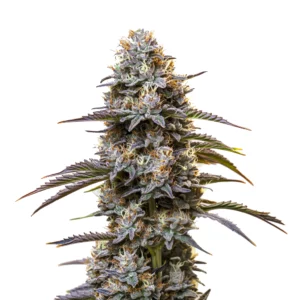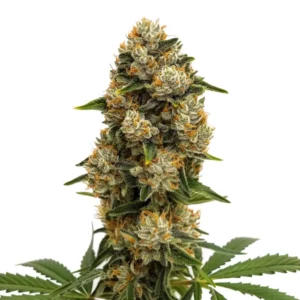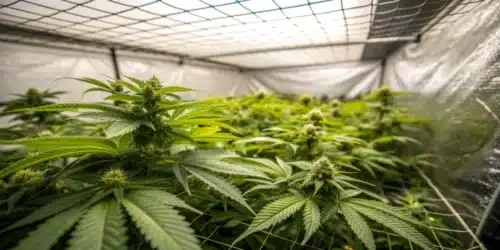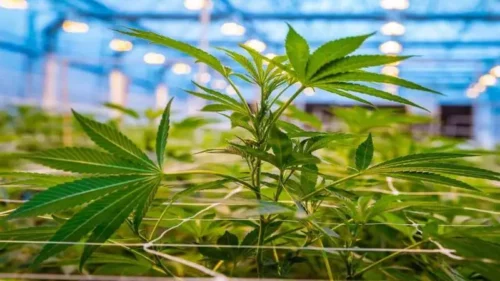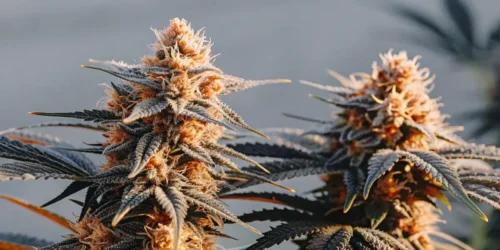Growing cannabis can be a rewarding experience, especially when you explore various techniques to enhance your harvest. One popular method among both novice and seasoned cultivators is the Screen of Green (ScrOG) technique. This approach is particularly effective for autoflowering plants, which have characteristics that set them apart from traditional photoperiod strains.
What is ScrOG?
ScrOG stands for Screen of Green, a technique that utilizes a screen or netting to manage and train plant growth. This method is beneficial because it helps promote better light exposure and encourages the production of more buds. By spreading the branches evenly under the screen, each bud site gains increased access to light, leading to larger yields, particularly with autoflowering strains that tend to have a compact growth structure.
Essentially, the goal of ScrOG is to create an even canopy, allowing for uniform light distribution. When trained to grow laterally rather than vertically, more parts of the plant receive light, resulting in denser and healthier growth. For autoflowers, timing and the right techniques are crucial for maximizing the benefits of ScrOG.
Promos & Deals
Benefits of ScrOG for Autoflowers
The ScrOG method offers several advantages, particularly when cultivating autoflowers:
- Maximized light exposure: Training plants in this manner allows for consistent light distribution, ensuring all bud sites thrive.
- Improved airflow: An open canopy enhances air circulation, reducing humidity and mitigating the risk of mold.
- More even growth: This training encourages uniform and balanced growth across all branches, leading to a healthier plant.
- Increased yields: By exposing more bud sites to light, your harvest can increase significantly.
These advantages make ScrOG an attractive option for those looking to maximize the potential of their autoflowering strains. With proper techniques, you can significantly enhance both the quality and quantity of your harvest.
Moreover, the method promotes a healthier growing environment by encouraging lower humidity levels, which is particularly beneficial in preventing mold and mildew. Cultivators often find that the increased airflow contributes positively to overall plant health, making ScrOG a great investment in your gardening efforts.
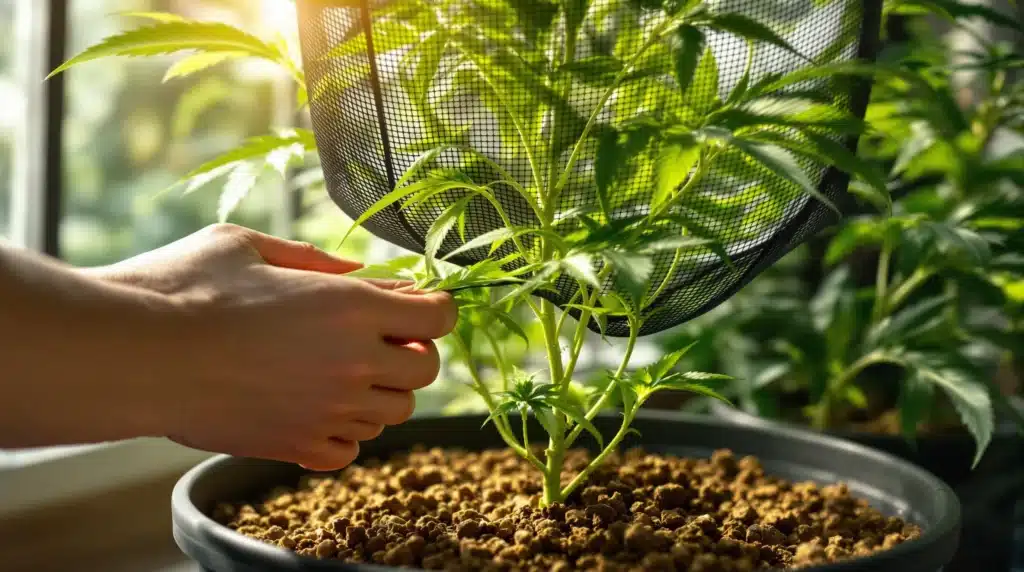
Getting Started with ScrOG
Before diving into the ScrOG technique, it’s essential to prepare your growing environment effectively. Start by selecting a suitable space that can accommodate your autoflowers. Ensure your grow area has adequate lighting, proper airflow, and appropriate temperature control. Many growers find that indoor setups provide the ideal environment for autoflowering plants.
Once your grow space is ready, the next step is to install the screen. Ideally, this screen should be positioned approximately 12 to 20 inches above the plants during their early growth stages. Flexible materials like plastic mesh work well, as they can accommodate the rapid growth of the plants. Secure the screen firmly to support the weight of flowering buds as they develop.
Remember that the setup of your environment can greatly influence the effectiveness of the ScrOG method. A well-ventilated space with controlled humidity levels will promote stronger growth and help your plants thrive. Planning ahead ensures that when you start training, your plants are positioned for success from the very beginning.
How to Train Autos Under the Screen
Training autoflowering plants requires a gentle and attentive approach. Start by allowing your plants to grow naturally for about a week to ten days post-germination. When they reach a height of approximately 6 to 8 inches, it’s an ideal time to begin training them beneath the screen.
Carefully weave the branches that are outside the screen back through it. This process will help distribute the branches evenly across the screen to maximize exposure to light. As your plants continue to grow, periodically monitor their progress and adjust branches if necessary by tucking them back under the screen when needed.
In addition to weaving branches, consider the overall health of your autoflowers. Since they are growing rapidly, ensure you are providing adequate nutrients and water to support their development. A nourishing environment will complement the training process and contribute to a robust and bountiful yield.
Timing is Essential
Being aware of when to start training is critical for success. Autoflowering plants typically have a shorter life cycle than traditional photoperiod strains, usually entering the flowering stage 8 to 10 weeks after germination. Therefore, it’s best to initiate training early; delaying may disrupt their growth cycle.
Each strain’s growth rate can vary, so keep a watchful eye on your plants. If you notice that they are responding particularly well or slowly, don’t hesitate to adapt your training method accordingly. Staying in tune with your plants’ needs will ensure the most successful outcome.
Maintaining Your ScrOG Setup
Once your plants are established under the screen, it’s vital to monitor their growth carefully. Regularly check the height of the branches and ensure that every bud site receives sufficient light exposure, promoting productive growth and robust bud formation.
You may find that occasionally, it’s necessary to prune leaves that are blocking bud sites. This practice redirects the plant’s energy toward flowering rather than maintaining excessive foliage. Always handle your plants with care to minimize stress and encourage overall health.
Creating a systematic routine for checking your plants can lead to improved monitoring over time. Regular observations will help you catch any potential issues early and allow for quick adjustments, enhancing overall productivity during the growing cycle.
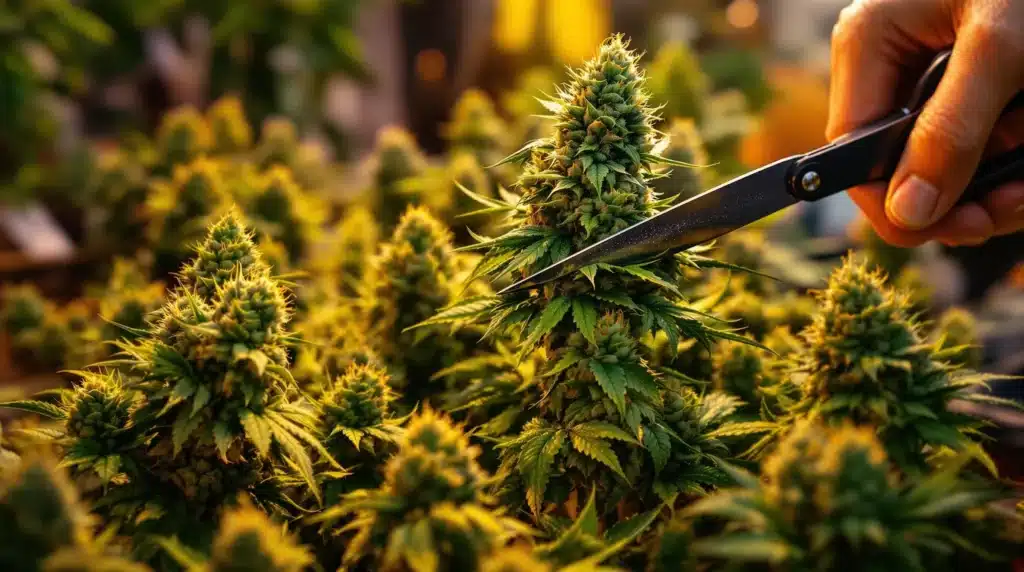
Common Challenges
While the ScrOG method can produce excellent results, it may come with its own set of challenges. One common issue that growers often encounter is managing plant height. Given that autoflowering plants grow rapidly, they may outgrow the screen before effective training can be fully established.
To address this potential challenge, maintain close observation of your plants as they mature. If you find them stretching too high, consider lowering the screen or pruning lower branches to promote wider lateral growth. This adjustment will help facilitate the distribution of branches across the screen, optimizing light exposure.
- Overcrowding: Too many branches can impede airflow and create an overly dense canopy, so ensure adequate spacing.
- Lighting issues: Ensure that light is evenly spread throughout your grow area to avoid dark spots.
- Stress from pruning: When trimming, always proceed with caution and make small cuts to avoid shocking the plant.
By preparing for these challenges ahead of time, you can better adapt your methods as needed. Each grow experience can teach you valuable lessons that will help enhance your skills as a cultivator.
When to Harvest
Determining the optimal time to harvest is crucial for obtaining the best results from your autoflowers. Look for signs that the trichomes have turned cloudy, indicating peak potency. Additionally, pay attention to the pistils: when they begin to turn amber or brown, it’s often a signal that it’s time to consider harvesting.
Using a microscope or a jeweler’s loupe will allow for a close examination of the trichomes and provide the most accurate assessment of ripeness. Monitor for signs of deterioration such as yellowing leaves, which may signal that harvesting should happen sooner rather than later. When the right indicators align, it’s time to proceed with cutting down your plants for the drying process.
Harvesting at the correct time is essential for preserving the quality and potency of your buds. Your attention to detail in this phase will pay off when you enjoy the fruits of your labor later on.
Tips for Successful ScrOG with Autoflowers
- Start training early: Aim to initiate the training process within the first couple of weeks of growth for the best results.
- Observe your plants: Different strains may react variably, so adjust your technique based on their responses.
- Measure your success: Keep notes on what works well for each strain to refine your methods in future grows.
- Maintain a clean environment: Regular upkeep of your grow space can prevent the onset of pests and diseases.
Implementing these tips will provide a solid foundation for maximizing the ScrOG method’s effectiveness while growing autoflowers. Each grow cycle offers an opportunity for growth, learning, and improvement in your cultivation skills.
FAQs
How long does it take to see results from ScrOG?
Results from the ScrOG method typically become noticeable as soon as your plants begin to flower, often within a few weeks after training. The key is maximizing light exposure during this period, which will enhance bud production.
Can I use ScrOG with photoperiod plants?
Absolutely! The ScrOG method is also suitable for photoperiod plants. However, keep in mind that their training schedules may differ due to their longer growth cycle. It’s all about timing your training right.
Will my autoflowers grow smaller if I ScrOG them?
Not necessarily. While ScrOG helps control vertical growth, the primary goal is to widen the plants to utilize available light more effectively. With proper techniques, you can ultimately enhance yields without stunting growth.
Do I need special equipment for ScrOG?
No specialized equipment is needed beyond the screen or netting. Basic gardening tools, good lighting, and effective airflow are all you require to maximize your ScrOG setup.
Can I combine ScrOG with other training methods?
Definitely! Techniques like low-stress training (LST) can effectively complement ScrOG. Feel free to experiment with different approaches to find what works best for your unique grow style.


